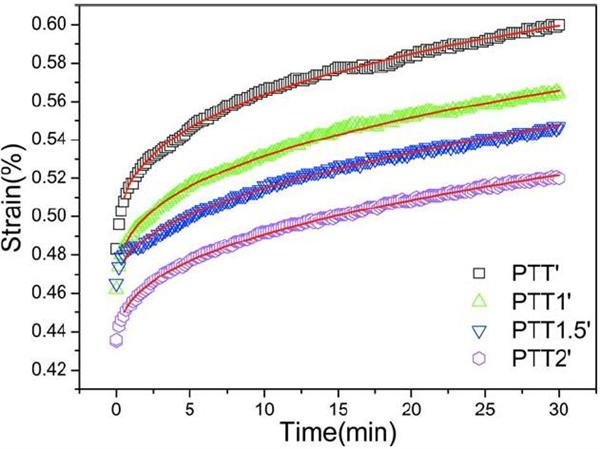Mechanical Properties and Creep Behavior of Poly(trimethylene terephthalate)/Mesoporous Silica Composites
writer:Haiyun Liu, Li Yin, Defeng Wu, Zhen Yao, Ming Zhang, Chong Chen, Pengfei Fu, Jing Qin
keywords:poly(trimethylene terephthalate) (PTT); mesoporous silica; composites; mechanical property; viscoelastic behavior.
source:期刊
specific source:Polymer Composites
Issue time:2015年
Polym. Compos., 2015, 36(8), 1386-1393

ABSTRACT:
The poly(trimethylene terephthalate) (PTT) containing mesoporous silica (SBA-15) prepared by in-situ polymerization were used as the master batch in this work to be mixed with the commercial PTT to obtain PTT/mesoporous silica composites. The mechanical properties and viscoelastic behaviors such as creep and creep-recovery of the as-obtained composite system were then studied in detail. The results reveal an evident reinforcing effect of the mesoporous SBA-15 particles at the lower loading levels. Compared with those of the pure PTT, the tensile strength and impact strength of the composite with 0.5 wt% SBA-15 particles increase by about 26% and 10%, respectively. This is attributed to the physical cross-linking between SBA-15 and PTT chain caused by the mesoporous structure of SBA-15 particle, which is confirmed by the increased glass transition temperature of the composites relative to the pure PTT. At the higher loading levels, however, the presence of mesoporous particle reduces the overall strength of PTT. This is because the concentration of lower molecular weight PTT in the master batch also increases with increasing loading of SBA-15. Therefore, superfluous addition of master batch has negative contribution to the mechanical strength of PTT composites. Besides, the composite system presents the higher creep levels and the lower recovery rates than the pure PTT, indicating that the presence of mesoporous SBA-15 particles restrains the movements of PTT chain segments during creep and creep recovery. This is further confirmed by the viscoelastic model predictions.
PDF DOWNLOAD:
http://onlinelibrary.wiley.com/doi/10.1002/pc.23043/abstract?campaign=woletoc